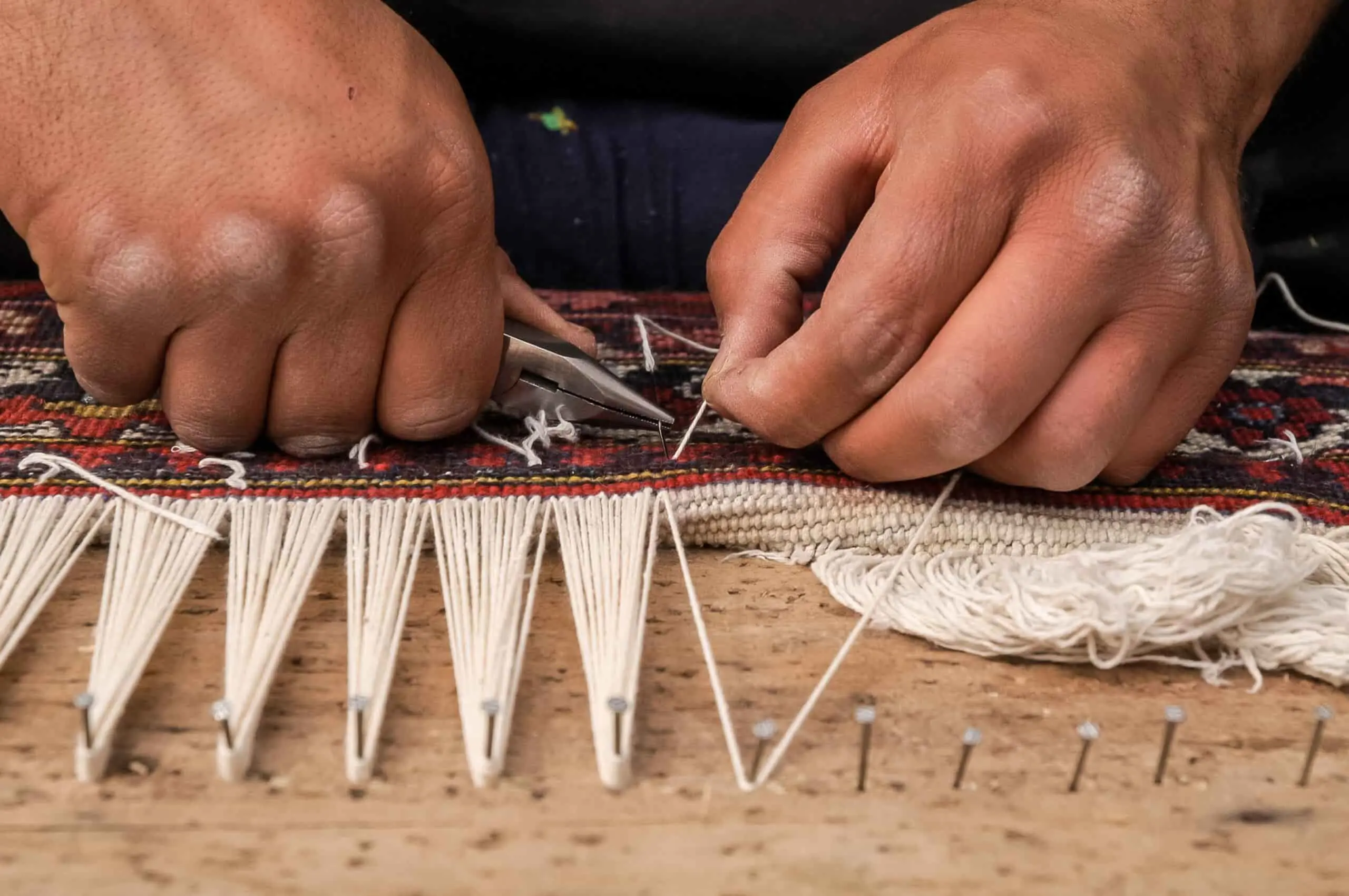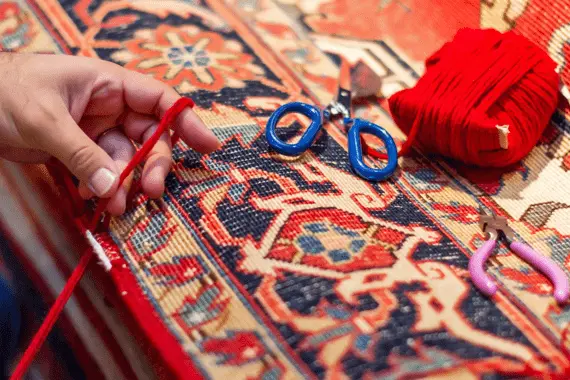Antique rugs are more than just decorative accents; they are also relics of the past with fascinating backstories. But with time, even the best-maintained rugs can start to seem worn out. Antique rugs may begin to lose their former beauty and brilliance due to years of use and abuse or just the passing of time. Restoration is the solution to this. Experts in antique rug restoration can revive these treasured objects and restore them to their former splendor by using various techniques and approaches.
In this post, we’ll delve into the magic of restoring an antique rug, the methods employed, and the benefits of saving a piece of history. Read on to learn more about this exciting craft, whether you’re interested in antique rugs or just curious about the restoration procedure.
What Does Antique Rug Restoration Mean, and How Is It Doing?
Antique rug restoration is restoring antique or vintage rugs (like living room rugs) to their original condition. This involves repairing any damage to the rug, including tears, holes, or fraying, and restoring the rug’s colors and design. The process typically involves cleaning, reweaving, and dyeing techniques that require specialized knowledge and experience. Professional rug restorers typically do antique rug restoration with the expertise and tools to handle delicate antique rugs. Antique rug restoration aims to preserve the rug’s historical and cultural significance while ensuring that it can be enjoyed for years to come.
Antique rug restoration requires a high level of skill and expertise, as well as a deep understanding of the cultural and historical significance of the rug. The process typically involves several steps, including cleaning, repairing any damage, and restoring the rug’s original colors and design.

The first step in antique rug restoration is cleaning the rug professionally. This involves removing dirt, dust, or stains from the rug using specialized cleaning techniques and tools. Once the rug has been cleaned, the restorer will assess the rug’s condition and determine what repairs are needed.
The next step in the antique rug restoration process is repairing any damage to the rug. This may involve reweaving rug sections that have been damaged or replacing missing fibers. The restorer will use traditional weaving techniques and materials to ensure the repairs are as authentic as possible.
Finally, the restorer will work to restore the rug’s colors and design. This may involve dyeing sections of the rug to match the original colors or using other techniques to restore the rug’s intricate designs and patterns.
Overall, antique rug restoration is a complex and delicate process requiring high skill and expertise. However, when done correctly, it can help preserve the beauty and cultural significance of antique rugs for generations.
How Can Restoration Impact the Value of Antique Rug?
An antique rug’s value may be significantly affected by restoration. A well-done repair can raise its market value by returning the rug to its original state and retaining its beauty and cultural significance. Conversely, a poor restoration might reduce the rug’s value by harming it or changing its appearance in a way that is not authentic to the materials or pattern initially made the rug.
When restoring an ancient rug, it’s crucial to ensure the work is done with conventional methods and supplies that honor the rug’s historical and cultural significance. The runner rug can be restored by a knowledgeable and expert restorer while still maintaining its worth and authenticity.
A repaired antique rug occasionally has a higher value than an unrestored rug of the same age and style. This is because a well-done restoration can increase the rug’s beauty and worth, increasing its appeal to collectors and buyers.
Choosing a trained and expert restorer is crucial to ensuring that the restoration is done correctly and in a way that retains the rug’s cultural and historical relevance because it can significantly affect the value of an antique rug.
Antique Rug Restoration – When to Try DIY Restoration and When to Hire a Professional?
Deciding whether to attempt DIY restoration or hire a professional restorer for your antique rug depends on a few factors. Here are some things to consider:
- The level of damage: If the rug has minor damage, such as small tears or loose threads, you may be able to attempt the restoration yourself. However, the damage is more extensive, such as large tears, missing sections, or severe staining. In that case, it is best to seek the help of a professional.
- Your experience and skills: Restoring an antique rug requires specialized skills and knowledge. If you have experience with rug restoration, you can tackle a small restoration project yourself. However, suppose you are a novice or lack experience in rug restoration. In that case, leaving the job to a professional is best.
- The value of the rug: If it has significant cultural or historical value, it is best to entrust it to a professional restorer. DIY restoration may accidentally damage the rug or alter its original design, which could decrease its value.
- The time and resources available: Restoring an antique rug is time-consuming and labor-intensive. If you have the time, patience, and resources to dedicate to the project, you can attempt DIY restoration. However, if you lack the time or resources, or the restoration requires specialized tools and materials, it is best to seek the help of a professional.
In general, it is best to err on the side of caution and seek the help of a professional restorer for antique rug restoration. A qualified and experienced restorer will have the knowledge, skills, and resources needed to restore the rug to its original beauty and value while preserving its cultural and historical significance.
Why Experience and Knowledge Matter in Antique Rug Restoration?
Experience and knowledge are critical in antique rug restoration for several reasons:
- Understanding of the rug’s origin and cultural significance: A knowledgeable restorer will understand the history, cultural significance, and materials they are working on. This understanding ensures that the restoration will respect the rug’s original design and materials, preserving its authenticity and value.
- Expertise in traditional restoration techniques: Antique rugs require specific restoration techniques that require years of experience and training to master. A restorer with the necessary expertise will deeply understand the traditional techniques and materials needed to restore the rug correctly.
- Knowledge of the correct tools and materials: Restoring antique rugs often requires using specialized tools and materials that may need to be more readily available. An experienced restorer will have the tools and materials required to complete the restoration to a high standard.
- Preservation of the rug’s value: An antique rug’s value depends on its authenticity, original design, and materials. An inexperienced restorer may inadvertently damage or alter these elements, decreasing the rug’s value. A knowledgeable restorer will work to preserve the rug’s cultural and historical significance, ensuring that its value is maintained or enhanced.
The Bottom Line
At Shabahang Royal Carpet, we understand the importance of preserving antique rugs’ value and cultural significance. Our team of restorers has the experience and knowledge necessary to restore antique rugs to their original beauty using traditional techniques and high-quality materials. Whether you want to restore a family heirloom or a valuable antique rug, you can trust Shabahang Rugs for professional and reliable restoration services. Contact us today to schedule a consultation and learn more about our restoration services.



